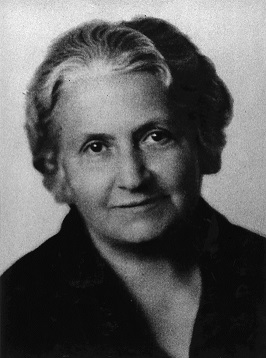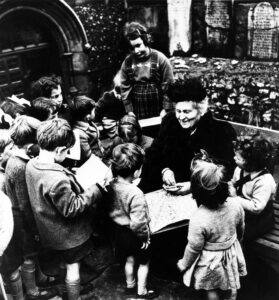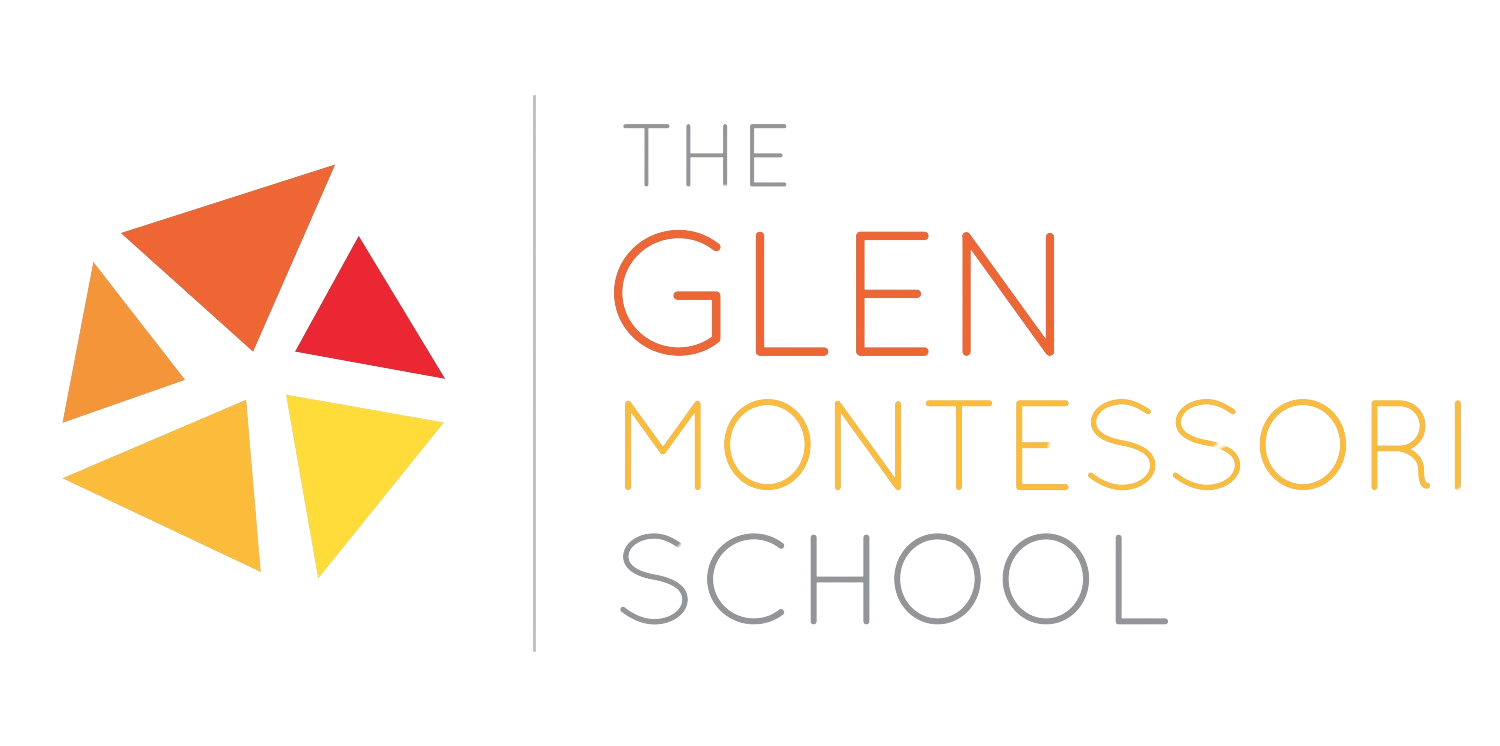Who is Maria Montessori?

Maria Montessori, a pioneering medical doctor, scientist, educator, and advocate for children, was born in Italy in 1870. Her journey was not without challenges; she defied societal norms by pursuing technical and medical education, becoming one of Italy’s first female doctors. Despite facing social barriers and oppressive attitudes, she persevered. Her father accompanied her to medical classes, and she was restricted to working alone in labs in the evenings.
It was on one of these evening trips, after an isolated training session, that the seeds of the Montessori Method of Education were planted. Dr. Montessori observed a small child playing with a piece of tissue paper and marveled at all the child was learning by interacting with the object in her own way. This simple observation led to a revolutionary approach to education, with the interaction between a child and a concrete material becoming the pillar of Montessori schooling. Her work has had a profound impact on child development.
As Dr. Montessori became more interested in the well-being of children, her medical training led her to work with children in the psychiatric clinic at the University of Rome and then at the National League’s Orthophrenic School. After developing materials for these children to manipulate and learn, she was lauded for educating children previously believed to be “uneducable.” Many officials and scientists monitored Dr. Montessori’s progress and wondered what she could accomplish with children in the general population.
Her first opportunity came in 1907 when she opened her first Casa dei Bambini (Children’s House) in Rome’s poor San Lorenzo district. The news of her success with these children soon spread, and she began training more teachers in her method. These teachers dispersed throughout Italy and the world to continue her work.
In 1915, Dr. Montessori came to America and was greeted by Thomas Edison and a newly formed American Montessori Society with its president, Alexander Graham Bell. During her visit, she spoke at Carnegie Hall and established a model classroom, visible behind glass walls, at the Panama-Pacific Exposition in San Francisco. The model classroom operated for four months and was awarded two gold medals for educational excellence.
Dr. Montessori was a dynamic educator and a steadfast champion of peace. During World War II, Montessori sought refuge in India after being forced into exile from Italy for her anti-fascist views. While living in India, she met Mahatma Gandhi and began her work by authoring a series of lectures published under the title Education and Peace. Peace Studies are still a core component of all Montessori teacher training programs and at the heart of every Montessori classroom. Montessori was twice nominated for the Nobel Peace Prize.
Today, many notable innovators credit their Montessori education for helping them to follow their passions, think independently, and blaze their own paths. Some well-known Montessori students include Taylor Swift, Beyoncé Knowles, George Clooney, Gabriel García Márquez, Julia Child, Google founders Larry Page & Sergey Brin, Amazon founder Jeff Bezos, video game pioneer Will Wright, and Wikipedia founder Jimmy Wales. Will Wright explains the lasting impact of his Montessori education: “Montessori taught me the joy of discovery.”
On August 31st, we celebrate Dr. Maria Montessori’s birthday and honor her legacy in the thousands of schools worldwide that follow her philosophy, helping to shape students into lifelong learners. To learn more about Dr. Montessori, please see the American Montessori Society webpage.




